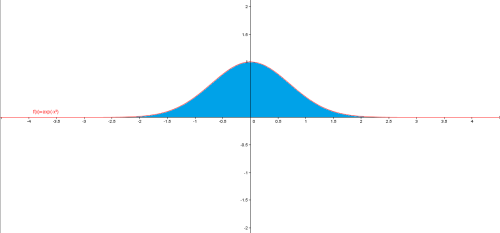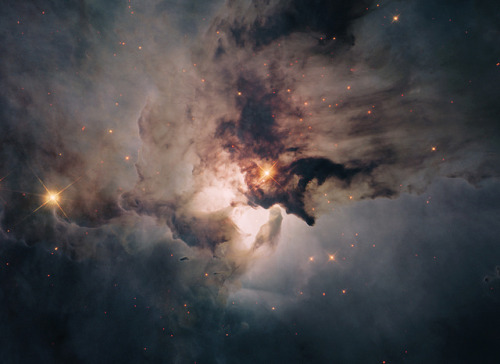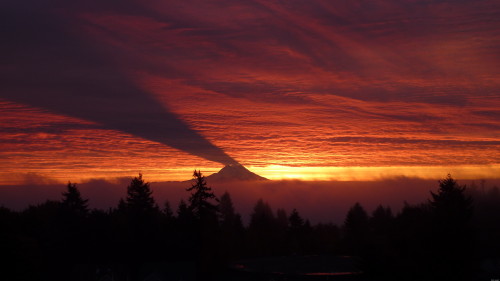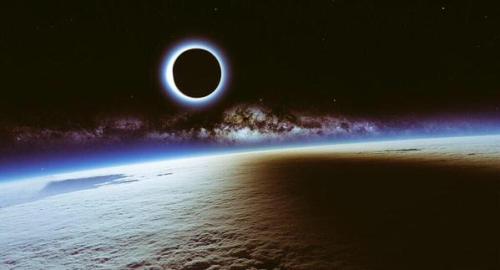The Gaussian Integral Is A Beautiful Integral For Which The area Between The E^(-x^2) And The X-axis


The Gaussian Integral is a beautiful integral for which the area between the e^(-x^2) and the x-axis from negative infinity to positive infinity perfectly equals the square root of pi. Image sources: 1, 2.
More Posts from Alitheastronomer and Others


Size of nebulae

Mount Rainier shadow casts on the sky at sunrise. It only happens when the sun rises farther to the south and has to be in the exact position to where Rainier blocks the first rays of morning light. (Source)
Here is a time lapse of the International Space Station flying over the earth.

A solar eclipse and the Milky Way seen from the ISS

Transit of Venus(2012) through rain clouds. Canon T3i with 100-400 mm EF lens.

Hubble Sees a Galactic Sunflower : The arrangement of the spiral arms in the galaxy Messier 63, seen here in an image from the NASA/ESA Hubble Space Telescope, recall the pattern at the center of a sunflower.
js
Solar System: 5 Things To Know This Week
Our solar system is huge, so let us break it down for you. Here are 5 things to know this week:
1. You Call the Shots

This July, when the Juno mission arrives at Jupiter, it will eye the massive planet with JunoCam. What adds extra interest to this mission is that the public is invited to help Juno scientists choose which images JunoCam will take. Now is the time to get involved.
2. Dawn Delivers

We’ve seen several images now from the Dawn spacecraft’s new, close orbit around Ceres—and they don’t disappoint. Exquisitely detailed photos of the dwarf planet reveal craters, cliffs, fractures, canyons and bright spots in many locations. “Everywhere we look in these new low-altitude observations, we see amazing landforms that speak to the unique character of this most amazing world,” said the mission’s principal investigator.
3. Remembering the Visit to a Sideways World

Jan. 24 is the 30th anniversary of Voyager 2’s Uranus flyby. The seventh planet is notable for the extreme tilt of its axis, its lacy ring system and its large family of moons—10 of which were discovered thanks to Voyager’s close encounter. In fact, we learned much of what we know about the Uranian system during those few days in 1986.
4. A Decade in the Deep

The New Horizons spacecraft left Earth 10 years ago this week. Its long voyage into deep space is, even now, transforming our understanding of the outer solar system. New data and pictures from the Pluto flyby are still streaming down from the spacecraft. Pending the approval of an extended mission, New Horizons is en route to a 2019 rendezvous with a small, unexplored world in the distant Kuiper Belt.
5. Power at a Distance

Space exploration helped drive the development of practical solar cells, and now solar power has gone farther than ever before. Last week, NASA’s Juno spacecraft broke the record for the most distant solar-powered craft when it passed a distance of 493 million miles (793 million kilometers) from the sun. The four-ton Juno spacecraft draws energy from three 30-foot-long (9-meter) solar arrays festooned with 18,698 individual cells.
Want to learn more? Read our full list of the 10 things to know this week about the solar system HERE.
Make sure to follow us on Tumblr for your regular dose of space: http://nasa.tumblr.com




Four beautiful examples of overlapping/interacting galaxies brought to you by the Hubble Telescope. To view the images in their full resolutions, please open them in a separate tab.
Well you're not wrong
true space facts
if u look up there it is
-
 beckettbeforemidnight liked this · 2 months ago
beckettbeforemidnight liked this · 2 months ago -
 nerdvillain reblogged this · 1 year ago
nerdvillain reblogged this · 1 year ago -
 birdcageromance liked this · 1 year ago
birdcageromance liked this · 1 year ago -
 ontherapysession liked this · 1 year ago
ontherapysession liked this · 1 year ago -
 not-kashy liked this · 2 years ago
not-kashy liked this · 2 years ago -
 mindscapesunny liked this · 2 years ago
mindscapesunny liked this · 2 years ago -
 ambrysia liked this · 4 years ago
ambrysia liked this · 4 years ago -
 siriuslypurple reblogged this · 5 years ago
siriuslypurple reblogged this · 5 years ago -
 gleng60 liked this · 5 years ago
gleng60 liked this · 5 years ago -
 cg98ir reblogged this · 5 years ago
cg98ir reblogged this · 5 years ago -
 bbillster liked this · 5 years ago
bbillster liked this · 5 years ago -
 solknaar liked this · 5 years ago
solknaar liked this · 5 years ago -
 greenglassolace liked this · 6 years ago
greenglassolace liked this · 6 years ago -
 apodisfeather liked this · 6 years ago
apodisfeather liked this · 6 years ago -
 funundrums reblogged this · 6 years ago
funundrums reblogged this · 6 years ago -
 vasu1729 liked this · 6 years ago
vasu1729 liked this · 6 years ago -
 saulofortz liked this · 6 years ago
saulofortz liked this · 6 years ago -
 memoria-teneo liked this · 6 years ago
memoria-teneo liked this · 6 years ago -
 jentheraven liked this · 6 years ago
jentheraven liked this · 6 years ago -
 alexandra989-v1 reblogged this · 6 years ago
alexandra989-v1 reblogged this · 6 years ago -
 alexandra989-v1 liked this · 6 years ago
alexandra989-v1 liked this · 6 years ago -
 110521sgl liked this · 6 years ago
110521sgl liked this · 6 years ago -
 uuuuuhhhhhhhhhhhhhhhhhh liked this · 6 years ago
uuuuuhhhhhhhhhhhhhhhhhh liked this · 6 years ago -
 augo-mati-augo-melato reblogged this · 6 years ago
augo-mati-augo-melato reblogged this · 6 years ago -
 augo-mati-augo-melato liked this · 6 years ago
augo-mati-augo-melato liked this · 6 years ago -
 telgarconennuyeux liked this · 7 years ago
telgarconennuyeux liked this · 7 years ago -
 wsoupofpain liked this · 7 years ago
wsoupofpain liked this · 7 years ago -
 ratemylabia reblogged this · 7 years ago
ratemylabia reblogged this · 7 years ago -
 susan-world reblogged this · 7 years ago
susan-world reblogged this · 7 years ago